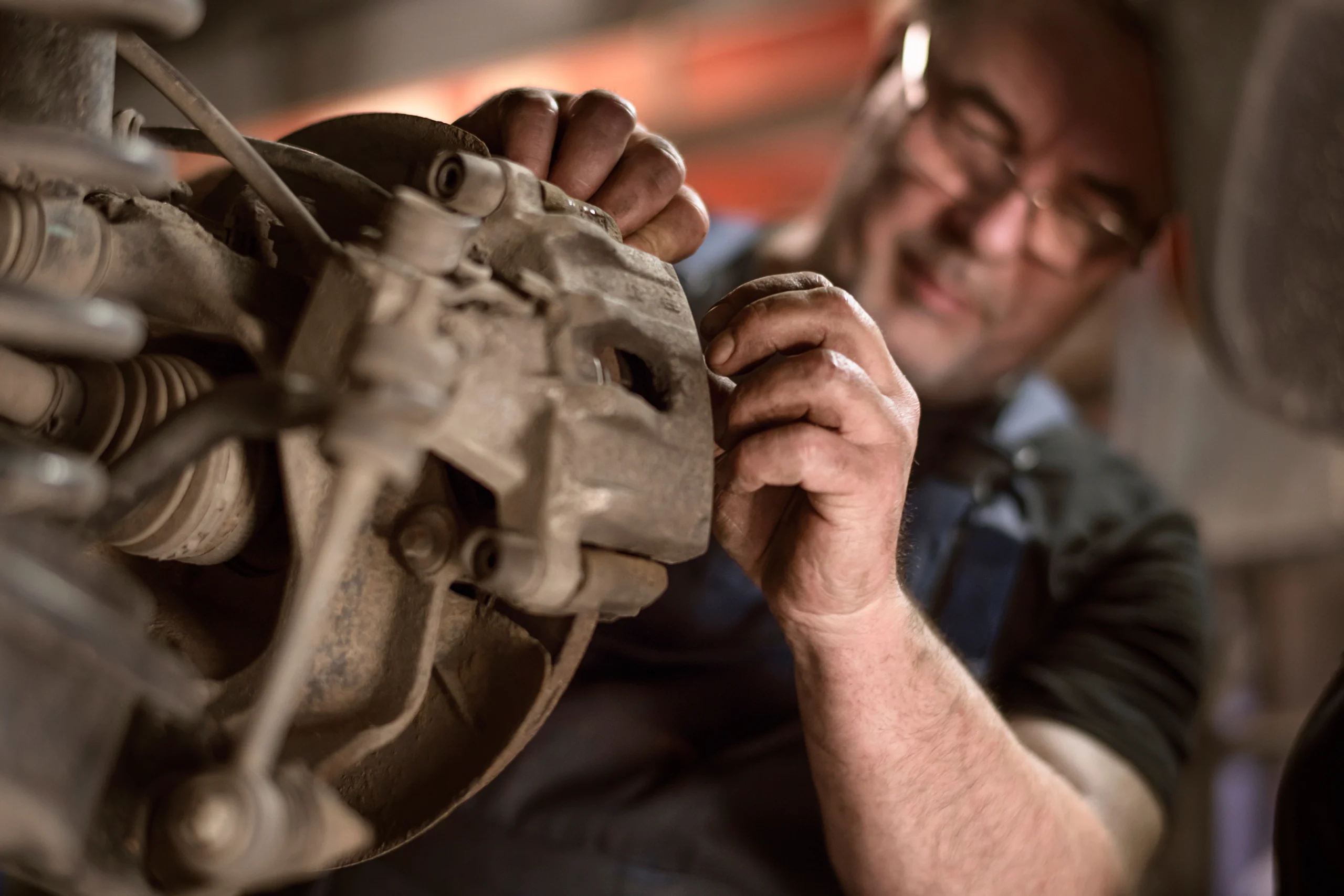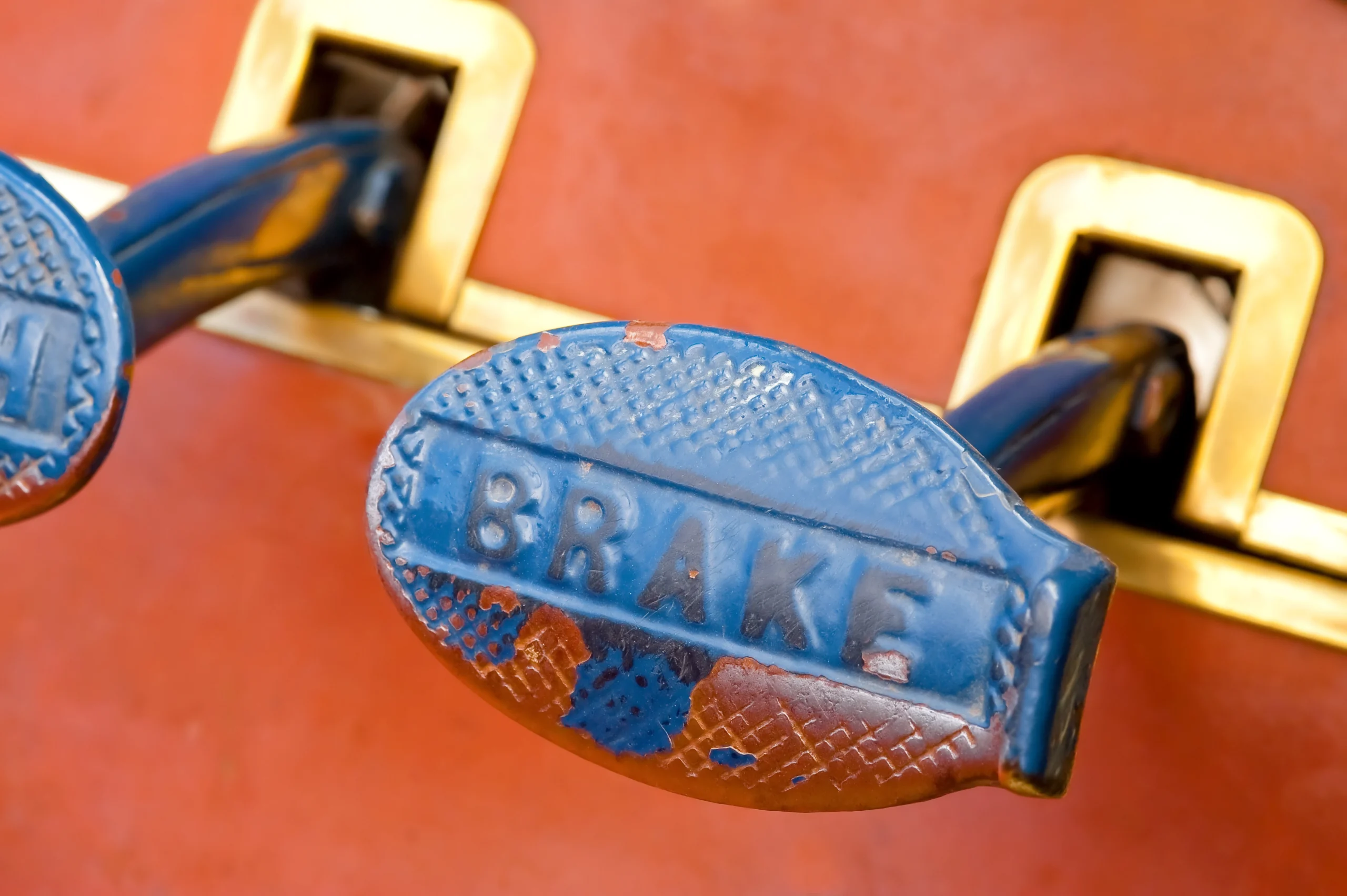Brakes tend to be a part of the car that many drivers never think about at all unless something goes wrong with them. For reasons that are hopefully obvious, the brakes may be the single most important feature of your car. You can limp down the road to your local mechanic with many parts of your car not operating the way they should, but brakes just aren’t one of them. Given the importance of your braking system for getting you from one place to another in one piece, here are 7 things you ought to know about your brakes.
How Brakes Work
Modern brakes in cars, predominantly disc brakes, operate through a hydraulic system that multiplies the force applied by the driver on the brake pedal, allowing the vehicle to slow down or come to a stop with ease. When the brake pedal is pressed, brake fluid is pushed through hydraulic lines, transferring force to the brake calipers. The brake calipers then clamp the brake pads onto the rotors, creating friction, which slows down the wheel’s rotation. Many cars today are also equipped with an Anti-lock Braking System (ABS), which prevents wheel lock-up by automatically modulating brake pressure during an emergency stop, allowing the driver to maintain steering control. The incorporation of electronic systems like ABS has significantly enhanced the effectiveness and safety of modern braking systems, adapting them to various driving conditions and scenarios.
Brake Pads and Rotors
When brake pads and rotors are worn down, various signs and symptoms indicate that they may need replacement. One common sign is a squealing or screeching noise when applying the brakes, caused by the wear indicator on the brake pads. A grinding metal-on-metal sound indicates that the brake pads are severely worn and might be damaging the rotors. Vibration or pulsation during braking, especially during high-speed braking, can signal warped rotors. Reduced brake performance, longer stopping distances, and the car pulling to one side when braking are also indicative signs.

In terms of replacing worn-out brake pads or rotors, the process involves several steps and requires tools, mechanical knowledge, and expertise. Initially, the car is safely raised, and the wheels are removed to access the brake components. For brake pads, the caliper is removed, and the old pads are taken out. The new brake pads are then installed, and the caliper is repositioned. It might require compressing the caliper piston to fit the new, thicker pads.
Replacing rotors involves an additional step. After removing the caliper and brake pads, the rotor is removed from the wheel hub. Sometimes, rotors might be stuck due to rust or debris, requiring additional effort or tools to remove. Once off, the new rotor is mounted on the hub, and the brake pads and calipers are reinstalled.
It’s essential to ensure that all components are reassembled correctly, and that the brake fluid level is checked and adjusted as necessary. After completing the replacement, a preliminary check by applying brakes ensures that everything is working correctly before driving. Finally, a gentle road test ensures that the brakes are functioning correctly and the car is safe to drive.
Brake Fluid
Checking and adding brake fluid is a straightforward process, but it requires careful attention to detail. First, you need to locate the brake fluid reservoir in the engine bay, usually near the driver’s side. The reservoir is typically made of translucent plastic, allowing you to see the fluid level without opening the cap. The fluid level should be between the “MIN” and “MAX” marks on the reservoir.
Before opening the reservoir, ensure that the surrounding area is clean to prevent any contaminants from entering the braking system. If you need to add brake fluid, first find the right type of brake fluid for your vehicle; this information can usually be found in your vehicle’s owner’s manual. It’s crucial to use the correct type of brake fluid because using the wrong fluid can cause significant damage to the braking system. It’s essential to ensure that all components are re-assembled correctly and that the brake fluid level is checked and adjusted as necessary.
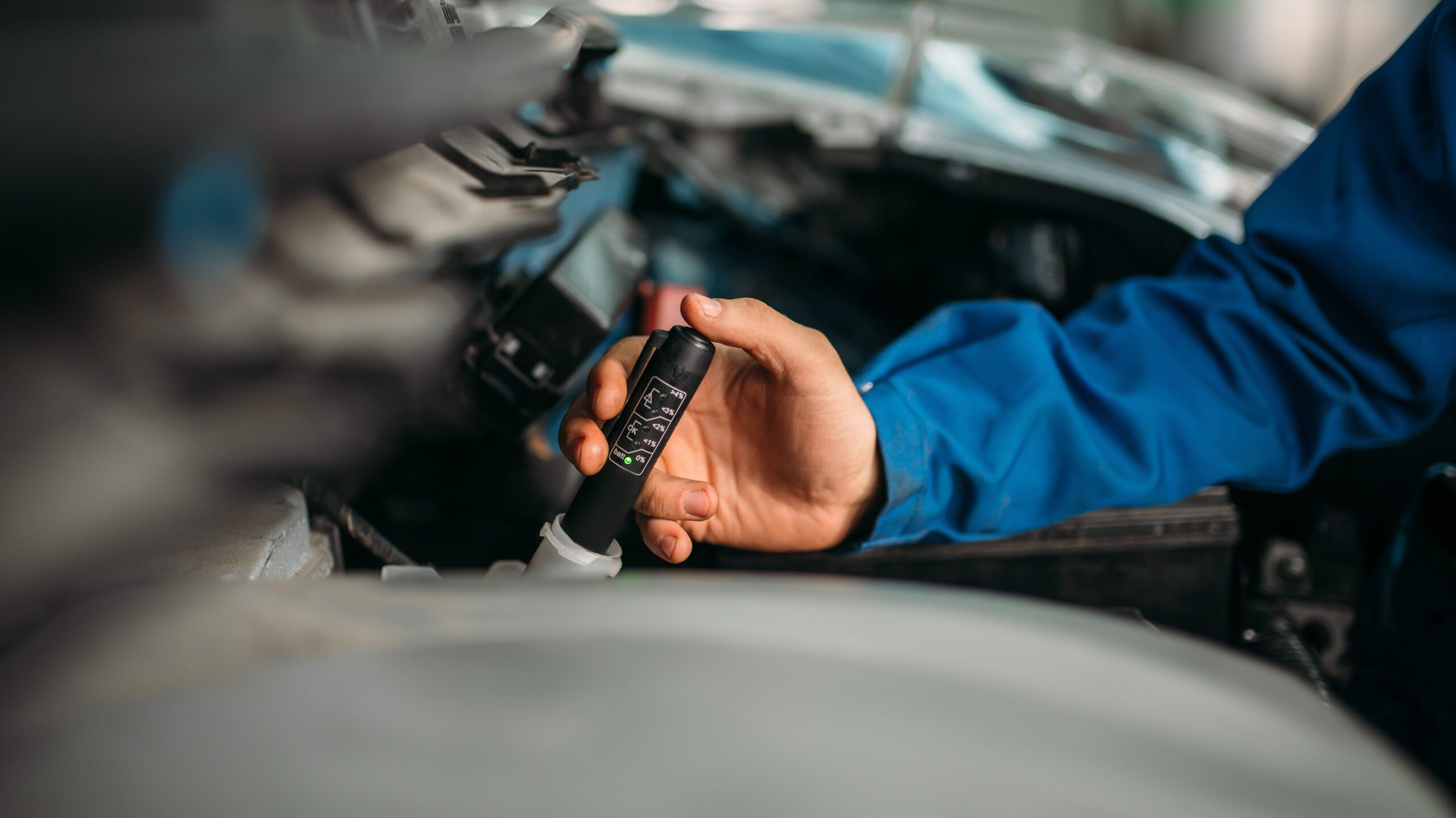
When buying brake fluid, look for sealed containers, and make sure it meets the specifications mentioned in your vehicle’s manual. Brake fluid absorbs moisture over time, which can lower its boiling point and affect braking efficiency. Therefore, it’s advisable not to use old or previously opened brake fluid containers.
To add brake fluid, open the reservoir cap, and pour the brake fluid carefully up to the “MAX” line. Avoid overfilling and ensure that the fluid doesn’t spill on any parts of the car, as it is highly corrosive. After filling, securely replace the reservoir cap.
Remember that brake fluid should not run low frequently. If you find the brake fluid level consistently low, it might indicate a leak or another issue in the brake system that should be inspected by a professional.
Regular Maintenance

Brake maintenance is a crucial aspect of vehicle upkeep that ensures the safety and functionality of your car’s braking system. Drivers should know that regular brake maintenance entails inspecting and, if necessary, replacing components like brake pads, rotors, and brake fluid. The brake pads and rotors are checked for wear, while the brake fluid is examined for proper levels and quality. Additionally, the brake lines and hoses are inspected for any signs of leakage or deterioration.
Regular brake maintenance can be performed at home if you have a good understanding of car mechanics, the right tools, and a safe environment like a garage. Basic tasks such as checking the brake fluid level and inspecting the brake pads for wear are manageable DIY activities. However, tasks like replacing brake pads, rotors, or bleeding the brakes are more complicated and might be better suited for individuals with more advanced mechanical skills.
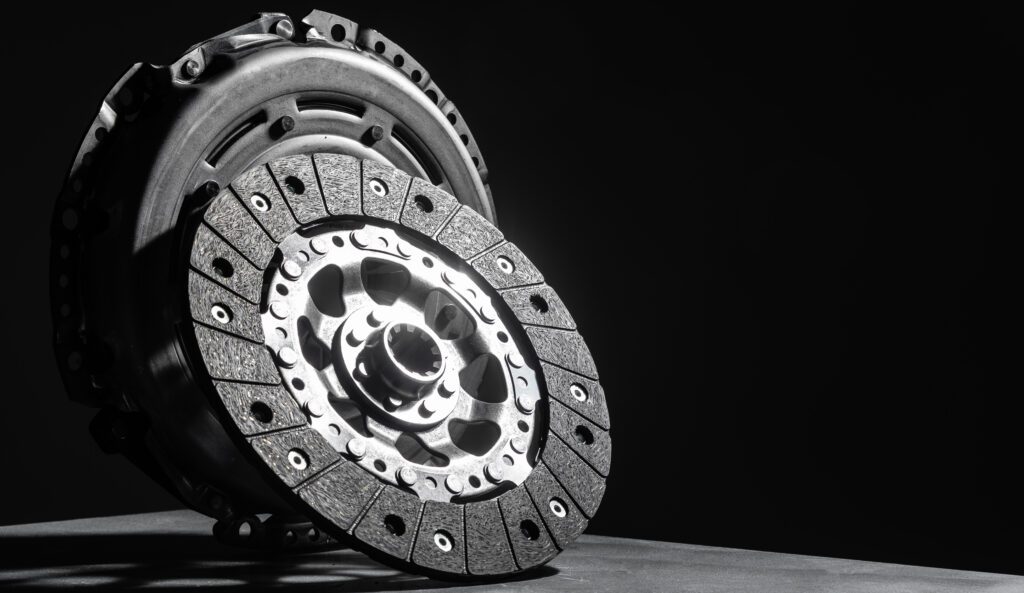
Regular brake maintenance can be performed at home if you have a good understanding of car mechanics, the right tools, and a safe environment like a garage.
For those who are not comfortable or experienced in auto mechanics, it might be best to have brake maintenance performed by professionals. Professional mechanics have the expertise and equipment necessary to accurately assess and effectively repair or maintain the braking system. They can also diagnose and address more complex issues that might not be evident to an untrained individual.
Having brake maintenance done by professionals might also be beneficial in terms of warranty and accountability. Ultimately, whether you choose DIY maintenance or professional services, the priority should be to ensure that the brake system operates effectively and safely at all times.
Emergency Braking
Emergency braking is a critical skill that all drivers need to master for their safety and the safety of others on the road. Drivers should be knowledgeable about whether their car is equipped with an Anti-lock Braking System (ABS), as the technique used during emergency braking depends on this feature.
For vehicles equipped with ABS, drivers should apply firm and continuous pressure on the brake pedal during an emergency. The ABS prevents the wheels from locking up, allowing the driver to maintain steering control, preventing skidding. Drivers might feel a pulsating sensation through the pedal, which is normal and indicates that the ABS is functioning.
In vehicles without ABS, the technique is different. Drivers should use threshold braking, which involves applying the brakes up to the point where the wheels are almost about to lock up and maintaining this level of pressure. Pumping the brakes can also be effective, which means applying and releasing brake pressure repeatedly.
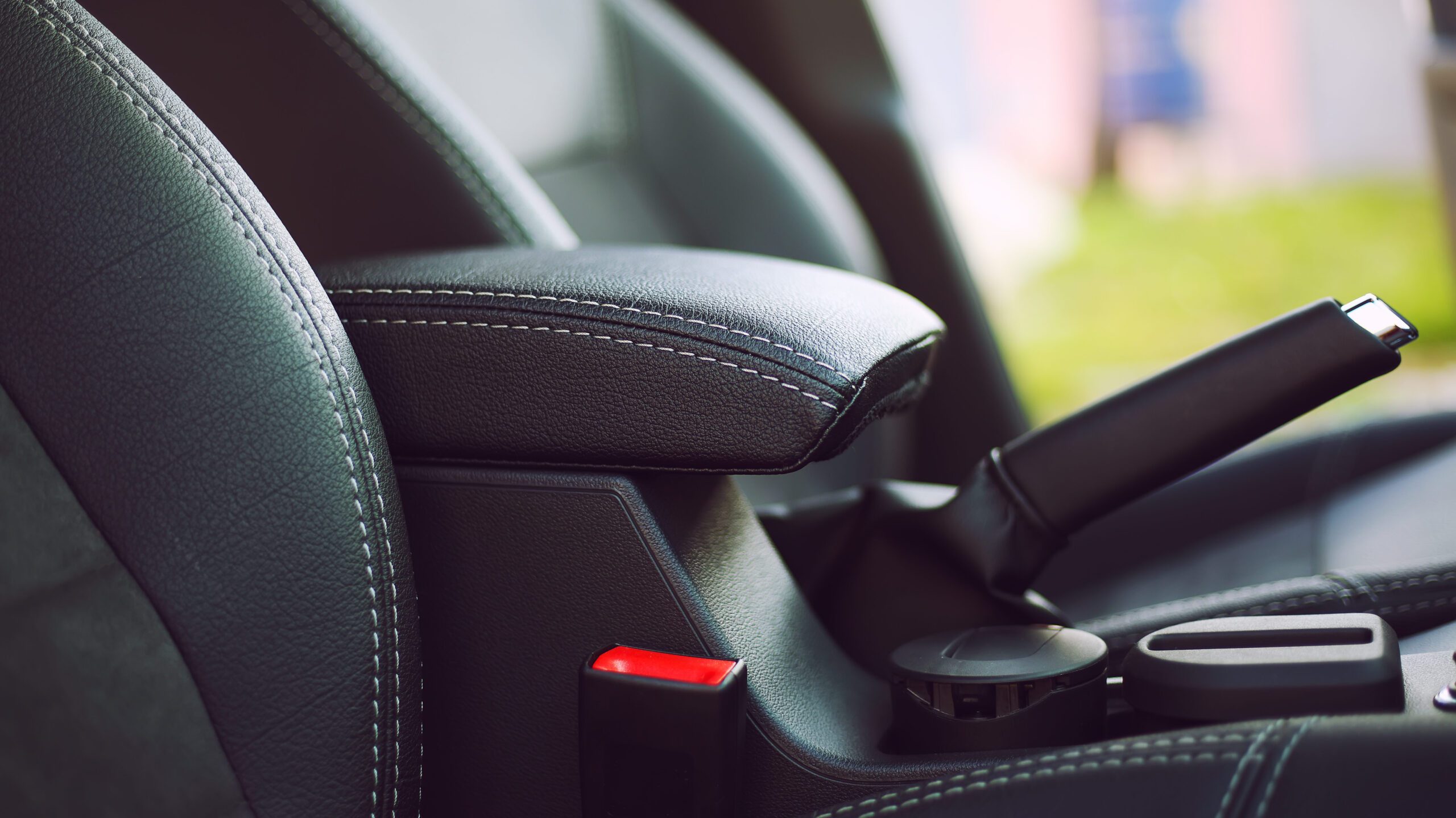
Regardless of the braking system, it’s crucial to look and steer in the direction you want the car to go during an emergency brake. Moreover, drivers should avoid slamming on the brakes, which can cause the wheels to lock up, leading to a loss of steering control.
Practicing emergency braking in a safe, open space like an empty parking lot can help drivers become more confident and effective in applying the brakes during real-life emergencies. Knowing how to use the braking system correctly increases the chances of avoiding a collision or reducing the impact speed if a crash is unavoidable.
Brake Warning Lights
Brake lights on a car’s dashboard play a crucial role in signaling potential issues with the vehicle’s braking system. These warning lights, usually red or yellow, may illuminate for several reasons, such as the engagement of the parking brake, low brake fluid levels, worn brake pads, or a malfunction within the braking system, like issues with the ABS (Anti-lock Braking System).
When these lights illuminate, immediate action is necessary to ensure the vehicle’s safety. Initially, you should safely pull over to a secure location and attempt to identify the issue. It could be as simple as disengaging the parking brake. If the parking brake is not engaged, it might be indicative of more serious issues, such as low brake fluid or a malfunction in the brake system. In cases where the cause is not immediately identifiable or resolvable, the safest course of action is to seek professional assistance. Driving with a lit brake warning light is not advisable, as it could lead to brake failure and increase the risk of an accident. Therefore, it’s essential to address the illuminated brake light promptly by consulting a professional mechanic who can accurately diagnose and rectify the issue.
Brake Responsiveness
Having a thorough understanding and awareness of these aspects will enable drivers to ensure that their brakes are always in optimal condition, enhancing road safety.
Brake responsiveness refers to the brake system’s ability to promptly and effectively respond when the brake pedal is pressed. Drivers should be aware of how their brakes usually feel and be attentive to any changes in their responsiveness. A responsive brake will bring the car to a stop in a controlled manner, corresponding to the amount of pressure applied to the brake pedal.
Changes in brake responsiveness can be indicative of various issues within the brake system. For example, if the brake pedal feels soft or goes down too easily when pressed, it could signal a problem such as air in the brake lines, worn brake pads, or a brake fluid leak. On the other hand, if the brake pedal feels hard or requires excessive force to depress, it might indicate a vacuum problem, such as issues with the brake booster.
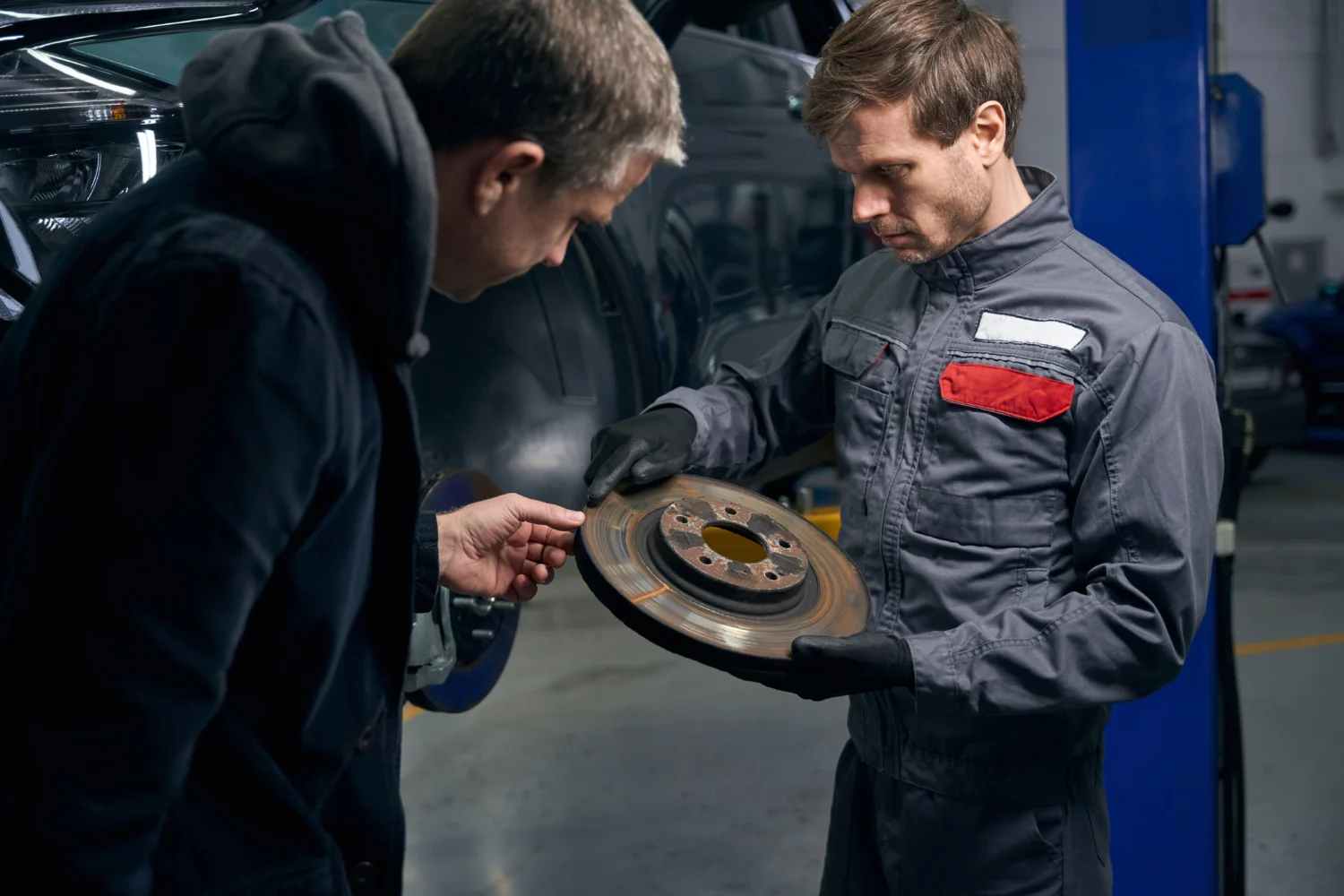
Vibration or pulsation in the brake pedal when pressed can point towards warped rotors or issues with the brake pads. If the car pulls to one side when braking, it could mean that the brakes are not evenly applied, possibly due to uneven wear, a stuck caliper, or a collapsed brake hose.
Noticing and addressing changes in brake responsiveness promptly is crucial for safety. Ignoring such changes could lead to reduced braking efficiency, longer stopping distances, and an increased risk of accidents. Drivers noticing any irregularities should seek professional help immediately to diagnose and rectify the problem, ensuring the brake system operates correctly and safely.
